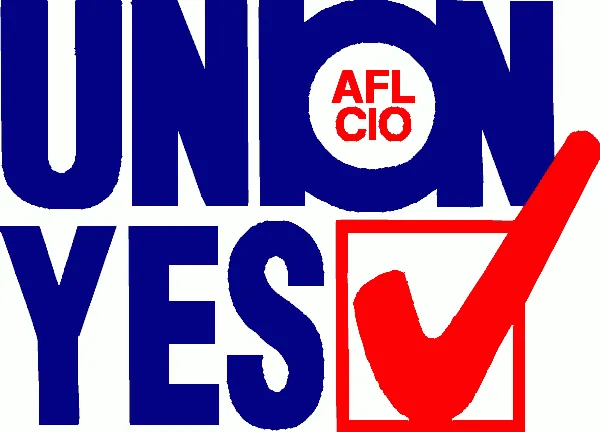
POLITICS
Texas Dems, AFL-CIO’s Trumka link voting and workers’ rights
People’s World
By Mark Gruenberg
July 16, 2021
Citing civil rights leaders the Rev. Dr. Martin Luther King Jr. and the late Rep. John Lewis, D-Ga., AFL-CIO President Richard Trumka and a delegation of Texas state Democratic lawmakers—who left Austin for D.C. to halt a draconian Texas GOP voter repression law—inextricably linked voting rights with worker rights. In an outdoor press conference at AFL-CIO headquarters, located just blocks from the White House on the now-renamed Black Lives Matter Plaza, the lawmakers and union leaders said those causes are one and the same. Trumka pledged a joint crusade for both. “It’s time for the Senate to be courageous and lead the way for the PRO Act and S1 and the rest of the Workers First Agenda,” Trumka declared. He also identified the foes.
Labor of love: Gillibrand, Schumer call for passage of ‘Pro Act’ to expand worker rights
AMNY
By Dean Moses
July 18, 2021
New York Senators Kirsten Gillibrand and Chuck Schumer are fighting to give a voice to working people through the passage of the Right to Organize (Pro) Act. On June 18, both senators held a press conference in Midtown Manhattan with Mario Cilento, President of the New York State AFL-CIO; Stuart Appelbaum, Executive Vice President of UFCW and President of RWDSU; and Brian Fleurantin, Care Manager in the Health Home Department at Housing Works in Brooklyn to discuss the critical nature of protecting workers’ rights now more than ever.
PAYWATCH/CEO PAY
AFL-CIO: S&P 500 companies CEO-to-Employee pay ratio up, averaged $299:$1 in 2020
WKRG
By Jacque Porter
July 16, 2021
The largest collective organization of trade unions in the United States, the AFL-CIO, says that the average pay ratio of CEO-to-Employees for S&P 500 companies increased to 299:1 in 2020 from 264:1 the previous year. The CEO-to-employee pay ratio measures how much money a company’s chief executive officer makes for every $1 its median employee makes. The Securities and Exchange Commission (SEC) has required larger publicly traded companies to calculate and disclose the metric since 2017. According to the AFL-CIO Secretary-Treasurer Liz Shuler, the average compensation for an S&P 500 CEO in 2020 was $15.5 million. “On average, in 2020 at S&P 500 companies, CEO pay increased by 5 percent while the disclosed median employee’s pay at those same companies only increased by 1 percent.” said Shuler.
Data highlights pay gap between employees and CEOs of Virginia-based publicly traded companies
WFXR
By Jordan Bondurant
July 18, 2021
It should come as no surprise that a corporate CEO is often the person compensated the most, but after a year that saw record-high unemployment due to furloughs and layoffs thanks to the COVID-19 pandemic, the gap between the pay of the CEO and the median employee pay increased according to data provided by the AFL-CIO. The AFL-CIO, the largest organization of trade unions in the country, has rolled out a tool on its website that gives you a chance to see just how wide the gap is between what the average employee is paid, and what the CEO of that company makes.
JOINING TOGETHER
I'm a Frito-Lay Factory Worker. I Work 12-Hour Days, 7 Days a Week
Vice
By Mark McCarter
Many of the 850 workers at the facility say they work 84 hours a week with no days off. Workers are nominally supposed to work eight-hour shifts, but because of shortages, workers are often forced to add on an extra four hours before or after their shifts. Workers call these extended shifts "suicides," because they say the schedule kills you over time. Some workers haven't had a single day off in five months, including Saturdays and Sundays.
The Washington Post
By Teo Armus
July 17, 2021
The Arlington County Board voted to allow collective bargaining for the county’s nearly 4,000 public employees on Saturday, giving labor unions the right to negotiate pay, benefits and other working conditions. The unanimous vote makes the affluent, left-leaning county the second locality to approve the practice in Virginia, a state long known for its opposition to organized labor. After the General Assembly lifted local bans in 2019, the city of Alexandria voted to allow collective bargaining for its employees in April.
IN THE STATES
Unions are best way (Opinion)
The Mining Journal
By Cajsa Maki
July 15, 2021
It is our hope, too, that our lawmakers will pass the PRO Act in the Senate so that all workers who want to join unions are able to do that without obstruction, and that all workers who are in unions can take action without fear.
North Shore AFL-CIO Endorses Dennis Kucinich in Cleveland Mayoral Race
Cleveland Scene
By Sam Allard
July 16, 2021
The North Shore AFL-CIO, the local labor organization representing more than 80,000 workers and nearly 150 unions in Northeast Ohio, has endorsed Dennis Kucinich in the 2021 Cleveland mayoral race. AFL-CIO Executive Secretary Dan O'Malley, standing before an array of local labor leaders and rank-and-file workers, said that more than 400 labor delegates from member unions ratified the recommendation of the AFL-CIO's executive board Wednesday. He said that Kucinich "well exceeded" the 2/3 majority required for the body to make an endorsement.
Missouri AFL-CIO launches initiative aimed at workforce development, mental health
The Missouri Times
By Cameron Gerber
July 16, 2021
Missouri AFL-CIO is launching a new initiative designed to improve diversity, mental health, and economic opportunities for Missouri’s workforce. The Missouri Works Initiative is a four-pronged approach focused on connecting Missourians with new opportunities through training, networking, and health information. Greta Bax, executive director of the initiative, said she was excited to work with AFL-CIO President Jake Hummel and Secretary-Treasurer Merri Berry to address the full spectrum of workers’ needs.